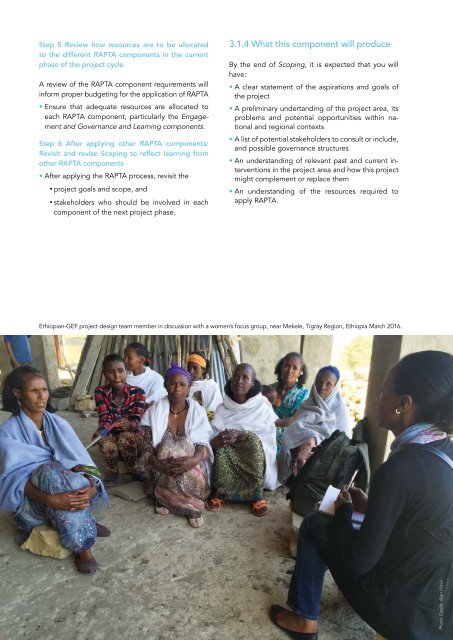DESIGNING PROJECTS IN A RAPIDLY CHANGING WORLD
srun3013fp1
srun3013fp1
Create successful ePaper yourself
Turn your PDF publications into a flip-book with our unique Google optimized e-Paper software.
Step 5 Review how resources are to be allocated<br />
to the different RAPTA components in the current<br />
phase of the project cycle<br />
A review of the RAPTA component requirements will<br />
inform proper budgeting for the application of RAPTA<br />
• Ensure that adequate resources are allocated to<br />
each RAPTA component, particularly the Engagement<br />
and Governance and Learning components.<br />
Step 6 After applying other RAPTA components:<br />
Revisit and revise Scoping to reflect learning from<br />
other RAPTA components<br />
• After applying the RAPTA process, revisit the<br />
• project goals and scope, and<br />
• stakeholders who should be involved in each<br />
component of the next project phase.<br />
3.1.4 What this component will produce<br />
By the end of Scoping, it is expected that you will<br />
have:<br />
• A clear statement of the aspirations and goals of<br />
the project<br />
• A preliminary undertanding of the project area, its<br />
problems and potential opportunities within national<br />
and regional contexts<br />
• A list of potential stakeholders to consult or include,<br />
and possible governance structures<br />
• An understanding of relevant past and current interventions<br />
in the project area and how this project<br />
might complement or replace them<br />
• An understanding of the resources required to<br />
apply RAPTA.<br />
Ethiopian-GEF project design team member in discussion with a women’s focus group, near Mekele, Tigray Region, Ethiopia March 2016.<br />
42 RAPTA guidelines for project design<br />
Photo Credit: Alan Nicol


